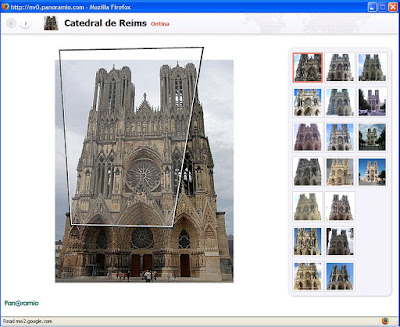yes this is a long post (and yes I did just cut and paste it from Adobe Labs but worth reading the whole lot).
and now you can go and get your own version to play with as well.
http://labs.adobe.com/technologies/flashplayer10/
Flash Player 10 includes new features, enhancements and bug fixes, including:
Creative Expression
Flash Player 10 will further the innovative and cinematic experiences users have come to expect from RIAs and rich media, taking web applications to a level previously only seen on the desktop.
Custom Filters and Effects — Expand your creative control by creating your own portable filters, blend modes, and fills using Adobe Pixel Bender, the same technology used to power filters and effects in After Effects CS3. Pixel Bender is a high performance image processing language that takes the pain out of writing custom, multithreaded effects and filters that can be added to web applications without any Flash Player update. Custom filters and effects can be combined with existing native Flash Player filters and applied to all display objects, including vectors, bitmaps, and video while retaining full interactivity. Custom effects can be parameterized to animate and change the effect at runtime. There is minimal impact on application size as complex filters are generally under 1KB.
3D Effects — Add a new dimension to your applications and extend the creative possibilities by easily transforming and animating any 2D display object through 3D space, while retaining all of the interactivity that exists in 2D space. Fast, extremely lightweight, and native 3D effects make motion that was previously reserved for expert users via ActionScript or Open Source libraries such as PaperVision3D, Sandy and Away3D available to everyone. Create complex effects with simple code by nesting 3D-transformed objects inside each other. Inheritance makes it easy to rapidly apply changes across objects.
New Text Engine — A new, highly flexible text layout engine, co-existing with TextField, enables innovation in creating new text controls by providing low-level access to text layout and interactivity APIs to create component-level text objects. The new text engine expands creative freedom by treating device fonts as first class citizens that can be anti-aliased, rotated, and styled and have filters applied as if they were embedded. The new text engine also offers right-to-left and vertical text layout, plus support for typographic elements like ligatures.
Text Layout Components — An extensible library of ActionScript 3.0 text components, coming in future to Adobe Labs, provides advanced, easy-to-integrate layout functionality that enables typographic creative expression. Layout and style text with tables, inline images, and column flow through components that are compatible with both Flash and Flex, all while getting the benefits of the new text engine. Rich text components allow designers and developers to flow text and complex scripts, such as Arabic, Hebrew, and Thai, across multiple columns like a newspaper, around tables and inline images, from right-to-left, left-to-right, bi-directionally, or vertically. Selection, editing, and wrapping of text are handled as would be expected for the different layouts.
Drawing API Enhancements — Enhancements to the Drawing API make runtime drawing much easier with re-styleable properties, 3D APIs, and a new way of drawing sophisticated shapes without having to code them line by line. Developers can tweak parts of curves, change styling, replace parts, and use custom filters and effects, delivering improved performance, creative control, and developer productivity. The enhancements extend the current drawing API to allow for read/write rendering and 3D effects, while adding memory and performance improvements that allow developers to create shapes using ActionScript that can be modified at runtime without re-drawing, edit dynamic drawings by modifying paths, and chain methods together to instantiate operations with a single method call.
Color Management — Flash Player 10 employs color management to deliver web applications with the most accurate color possible, so your favorite web destinations look the way they were intended. Opt-in color management allows you to convert SWFs into sRGB (standard RGB), an international standard color space formulated by the International Electrotechnical Commission (IEC). Color management works with the monitor’s ICC color profile, turning the entire SWF into a color-managed object. Color management can be toggled on and off at runtime.
Visual Performance Improvements
Flash Player 10 builds on the dramatic script execution performance improvements introduced in Flash Player 9 with the new ActionScript 3.0 Virtual Machine (AVM2) by enhancing the equally important visual performance of your RIAs and rich media experiences. Leveraging the power of the GPU for blitting and compositing reduces the load on the CPU and can provide a performance boost to many graphically intense applications, resulting in more fluid, realistic and responsive user experiences.
GPU Compositing — Combining images, filters, and video in your SWF just got faster. Your video card can be used to do compositing on all raster content. Utilizing the hardware processing power of the graphics card, GPU compositing accelerates compositing calculations of bitmaps, filters, blend modes, and video overlays faster than would be performed in software on the CPU. GPU compositing is applied when specified in the HTML parameters provided appropriate graphics hardware is available. If the hardware does not provide required capability, Flash Player will fall back to the software rendering without user interaction. Hardware compositing takes advantage of the tremendous memory bandwidth and computational horsepower of the GPU, reducing the load on the CPU, and can provide a performance boost to many graphically intense applications, resulting in more fluid, realistic and responsive user experiences. Open GL 2.0 video card with GLSL capabilities required to use this feature. When in use with the beta, a green square will appear in the upper left corner when accelerated.
GPU Blitting — Paint SWFs into the browser using your video card by choosing this new HTML parameter. Your content can run faster and give you the freedom to do more. Developers can enable or disable GPU surfacing to perform hardware blitting for each SWF within a web page without having to recompile the SWF. GPU surfacing extends the hardware-scaled fullscreen view introduced in Flash Player 9 Update 3 and applies it to the browser window so that the pixels drawn to the browser go through the GPU, resulting in improved performance and reduced CPU demand, rendering video- or image-intensive applications faster.
Anti-Aliasing Engine (Saffron 3.1) — An update to the Saffron anti-aliasing text engine increases performance and quality of anti-aliased text, particularly for Asian character rendering. Support for stroke fonts reduces memory requirements.
Vector Data Type — Flash Player 10 and ActionScript 3.0 add support for a new data type called Vector that is an ECMAScript 4 proposed language addition that is similar to an Array but requires that all elements be of the same type. By having a consistent type, performance on Vectors is significantly higher than Arrays. Vectors work as a parameterized type.
Rich Media
Flash Player 10 introduces new audio and video features that will be available with intended future releases of Adobe Flash Media Server or other Adobe server products to optimize the delivery of rich media and enhance end-user experiences.
Dynamic Streaming — Always show the best video possible with streams that can automatically adjust to changing network conditions. By changing bitrates, you can keep your user engaged and avoid start-and-stop video. Dynamic streaming provides the best possible experience to the video consumer based on their bandwidth environment. Video streams over RTMP from intended future releases of Flash Media Server can dynamically change bitrate as network conditions change. Quality of Service metrics, exposed via ActionScript and providing real-time network or CPU information, allow developers to take control of the video playback and adjust the streaming experience accordingly. This feature is part of Flash Player 10 but will only be available with intended future releases of Flash Media Server.
RTMFP (Real Time Media Flow Protocol) — RTMFP provides a UDP-based secure network transport alternative to RTMP-over-TCP. To take advantage of the feature you will need to establish a net connection via future releases of Flash Media Server or other Adobe server products. UDP (User Datagram Protocol) is an efficient and standardized Internet protocol for delivering media assets because of its support for lossy delivery, improving performance of real time communication. RTMFP is always encrypted which helps protect media delivery. This technology is a result of Adobe’s acquisition of Amicima, Inc. in 2006. If you are interested in being part of the private prerelease for RTMFP, please send an email to fmsprerelease@adobe.com with your contact details.
Speex Audio Codec — The new, higher fidelity Speex voice codec offers an alternative to Nellymoser for audio that delivers the lowest-latency audio experience possible. When RTMP or RTMFP is used with future releases of Flash Media Server, live and unbuffered Speex transmissions will take advantage of RTMFP’s partial-reliability feature to reduce network latency.
Other Community Requested Enhancements
In addition to the new creative expression, visual performance and rich media features, Flash Player 10 includes a number new features that have been frequently requested by the community.
File Reference runtime access — Bring users into the experience by letting them load files into your RIA. You can work with the content at runtime and even save it back when you are done through the browse dialog box. Files can be accessed as a byteArray or text using a convenient API in ActionScript without round-tripping to the server. You no longer have to know a server language or have access to a server to load or save files at runtime.
Dynamic Sound Generation — Dynamic sound generation extends the Sound class to play back dynamically created audio content through the use of an event listener on the Sound object.
Large Bitmap Support — Flash Player 10 now provides the ability to manipulate large bitmaps up to 16,777,216 pixels (4096 by 4096) with a maximum length of 8191 pixels per side.
Context Menu — Developers now have more control over what can be displayed in the context menu through the use of ActionScript APIs for common text field context menu items, supporting plain and rich text. The clipboard menu provides access to the clipboard in a safe and controlled way, and you can write handlers to paste text.
GB18030 Compliance — GB18030 is the latest character set mandated by the Chinese government for displaying text. Flash Player 10 compliance with this official character set ensures support for all applications deployed on Flash Player that require GB18030.
Ubuntu OS Support — Flash Player 10 now supports Ubuntu, one of the most popular flavors of Linux.
Tags: flash by Me
1 Comment »











